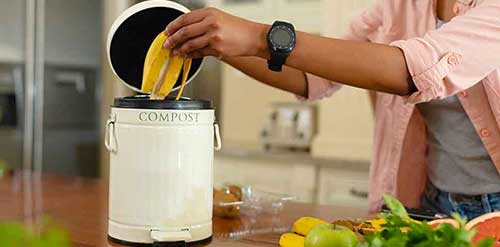Hyundai Motorstudio Senayan Park
Hyundai Motorstudio Senayan Park
Newsroom
The official news from Hyundai Motorstudio Senayan Park and a collection of innovative articles on mobility and sustainability here.
-
Composter: A Simple Method to Process Kitchen Waste
- Hyundai Motorstudio Senayan Park Senayan Park 2022.06.10
-
Utilizing kitchen waste into composter offers various benefits such as improving soil conditions, reducing gas emissions and pollution, also keeping the environment clean. But what is a composter?
Despite the benefits it offers, making a composter is actually not that difficult. In fact, anyone can make compost anywhere, as long as they understand how to make it and how to use it.
What is a Composter?
Composter is a natural process of breaking down organic matter, such as fruit and vegetable, into fertilizers that can enrich soil nutrients. Anything that grows can actually decompose, but a composter will speed up the decomposition process.
Compost has decomposing agents such as bacteria, fungi, nematodes, and other organisms. That is why the decomposition process becomes faster. Often called 'black gold', composter is rich in nutrients for plantations, agriculture and horticulture.
With its benefits, composter has economic value. Moreover, the raw materials can be obtained from the kitchen, like vegetable and fruit waste. So, in addition to prevent organic waste from going directly into garbage, better if it is used.
Actually, all organic materials can be used as raw material for composter. In addition to fruits and vegetables as the common raw materials, meat and leftover rice can be included.
6 Simple Tips for Making Composter
Making a composter is not as difficult as you might think, and it can be done at home. As long as there is waste from the kitchen, water, and sugar, the composter process can begin.
1. Raw Material
The organisms require four elements to work, which are nitrogen, carbon, air and water. Since all raw materials already contain varying levels of carbon and nitrogen, the success of a composter depends on the combination of raw materials.
The ratio of carbon and nitrogen should be ideal, ie 25-30 carbons for every 1 nitrogen. Too much raw material that contains carbon, it becomes drier and the process will take longer. On the other hand, too many nitrogen elements, the compost will be softer and wetter with a strong smell.
The same goes for water and air levels. Irrigation should not be done frequently and the air should be limited, or depending on the composting method.
2. Temperature
Decomposition will occur when all the raw materials are in optimal conditions for aerobic organisms to develop. The optimal temperature for aerobic decomposition is 50°C.
At this temperature, microorganisms will break down the waste and reproduce at high speed. High temperatures are also able to kill bacteria left on raw materials.
3. Watering
Irrigation will provide an aerobic environment that accelerates the decomposition of organic matter. It is highly recommended to irrigate once a week during the rainy season, or not. For summer, irrigation can be done every day.
4. Humidity
Maintaining the level of humidity is important for the decomposition of organic waste. The decomposition can be faster if the raw material is moist so that it is easily destroyed by organisms.
Lack of moisture makes the decomposition process run slowly, but too humid makes the environment anaerobic which can trigger bad odors and slow down the process. To maintain moisture, simply add water if it too dry, or add a high-carbon raw material if it too wet.
5. Size
Medium with a dimension of 1 m is ideal for a composter. Adequate kitchen waste is required to produce the optimal temperature for aerobic organisms to thrive. Too large makes the air unable to flow freely so the decomposition does not run optimally.
Similar to the size of kitchen waste that will be used as raw material. First cut it into small pieces before placing it into the composter media. The smaller the raw material is cut, the faster the decomposition. The rule, use raw materials that are no bigger than a finger.
6. Location
The most ideal location for making compost is in a shady area. If you live in a wet area, avoid placing compost media in areas with poor drainage because it makes the compost rot. Likewise, if you live in a hot area, place the compost media in a shady area so the compost will not dry out quickly.
To start, place the leftover brown fruit or vegetable at the very bottom and add the rest of the ingredients. If there are other kitchen wastes, add them and stir with the old ingredients.
Leave it for four days for the first decomposition stage to run before giving water. Don't forget to turn the compost over and see if the moisture level is adequate.
7. Container
Using a tub is the easiest way to make compost at home. The tub can be anything, be it a trash can, bucket, wood and others. What must be considered, compost containers are divided into two: closed containers and open containers.
The closed container makes the compost raw material get high heat and humidity. Although closed, the bottom must be open to allow air to change. The open-container composting method requires less maintenance, but attracts a lot of small animals and spreads bad odors.




